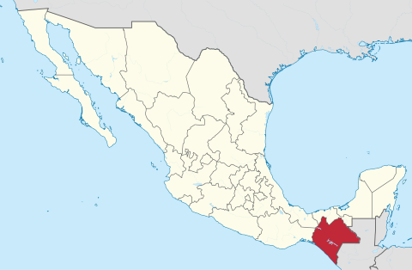Chiapas State

Chiapas accounts for 1.73% of Mexico's GDP. The primary sector, agriculture, produces 15.2% of the state's GDP. The secondary sector, mostly energy production, but also commerce, services and tourism, accounts for 21.8%. The share of the GDP coming from services is rising while that of agriculture is falling. The state is divided into nine economic regions. These regions were established in the 1980s in order to facilitate statewide economic planning. Many of these regions are based on state and federal highway systems. These include Centro, Altos, Fronteriza, Frailesca, Norte, Selva, Sierra, Soconusco and Istmo-Costa.
Agriculture, livestock, forestry and fishing. Major crops include corn, beans, sorghum, soybeans, peanuts, sesame seeds, coffee, cacao, sugar cane, mangos, bananas, and palm oil. Coffee is the state's most important cash crop with a history from the 19th century.
The state's abundant rivers and streams have been dammed to provide about fifty-five percent of the country's hydroelectric energy.
Chiapas is rich in petroleum reserves. Oil production began during the 1980s and Chiapas has become the fourth largest producer of crude oil and natural gas among the Mexican states.
Industry is limited to small and micro enterprises and include auto parts, bottling, fruit packing, coffee and chocolate processing, production of lime, bricks and other construction materials, sugar mills, furniture making, textiles, printing and the production of handcrafts. Chiapas is one of the states that produces a wide variety of handcrafts and folk art in Mexico. One reason for this is its many indigenous ethnicities who produce traditional items out of identity as well as commercial reasons. One commercial reason is the market for crafts provided by the tourism industry.
GDP CHIAPAS $19 795 million of USD






